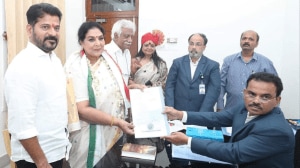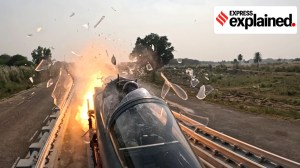Sound and fury and the subsidies paper
It's difficult not to be impressed by the new Prime Minister and his new/old Finance Minister these days. Apart from the fact that they hav...

It’s difficult not to be impressed by the new Prime Minister and his new/old Finance Minister these days. Apart from the fact that they haven’t bowed to pressure from the left and other parties while moving the Finance Bill, they seem to be determined to make a dent in the huge subsidies empire which has gnawed into the country’s very vitals. And, judging by the statements the Prime Minister has been making, it’s very likely that we may soon have the much-needed (though not eagerly awaited) hike in petroleum prices. But is it really as simple as that?
For just a day or two after the discussion paper on subsidies was circulated to MPs, the issue of the closure of the state-owned sick IDPL came up before the Union Cabinet once again. What happened? The Left dug in their heels once again and Gujral decided to refer the matter to a Committee of Ministers! Maybe this is the budget’s quid pro quo- Chidambaram won’t give in to their demands, but in deference to their wishes, closing down of sick PSUs like IDPL (IDPL’s accumuated losses are Rs 740 crore) will be put off for as long as possible.
IDPL, as we all know, was first referred to the BIFR in 1992 and the first revival package, approved in 1994, did not succeed as it did not achieve even the limited targets set forth in the revival plan. The latest package, prepared by the IDBI recommends a drastic cut in manpower from the present level of 7,600 to 2,400, and is likely to cost Rs implementing these suggestions would be around Rs 710 crore. In fact, according to IDBI, even if the measures are implemented, the projected gross profit of IDPL would not be adequate to service the new liabilities.
And if one makes more than a cursory examination of the subsidies’ paper, what does it really show? Nothing that the government didn’t already know. Close to 5 years ago, in fact, Sudipto Mundle of the National Institute of Public Finance & Policy (NIPFP) had done a similar paper (with a few less details) talking of the cost of hidden and explicit subsidies- incidentally, the discussion paper was based on another detailed study by NIPFP. Since the issue of poor recovery rates from these areas isn’t terribly new either, what is the contribution of this discussion paper? The government will say it is the distinction they have made between "merit" and "non-merit" goods- the assumption being that once you make it known that the subsidies are going to "non-merit" areas, no political party will have any objection to these being stopped.
That’s nothing but humbug. The fact of the matter is that political parties, both within as well as without the United Front, have continuously been opposing any withdrawal of subsidies on so-called "non-merit" areas like irrigation and electricity. The government also knows this.
In fact, at various meetings such as the Conference of State Power Ministers it has been agreed to raise prices of electricity charged to farmers to 50 paise per unit (even this will be less than a third of the cost). Yet, just 5 SEBs, primarily those who have low levels of agricultural consumption like Himachal Pradesh and Assam, have actually implemented this.
Even in Andhra Pradesh which is now trying to aggressively reform, agricultural tariffs were raised last year from the flat rate of Rs 25 per HP a year to Rs 250-600 per HP a year depending on the capacity of the pumpsets. Faced with strong opposition, this was scaled down to Rs 150-400 per HP, which is enough to ensure that a pitiful 9 per cent of costs can now be recovered from farmers. The story of hiking irrigation rates to cover at least the maintenance costs of canals is a similar one. If tha isn’t bad enough, let’s look at the situation as far as petroleum subsidies are concerned. At close to 18,440 crores, it is clear that something drastic needs to be done. If you read the discussion paper, you will be certain that petrol prices will not be raised as the big subsidies are really in diesel, kerosene, and cooking gas- petrol, in fact, is not even subsidised. Just wait for the hike and see what happens.
There are very good chances that petrol prices will be hiked and justified on the grounds that the rich use this. Price hikes on diesel and kerosene will be muted because these, we will be told, are used by either the poor or (in the case of diesel) will affect the cost of transportation, and eventually the poor! It is expedient, as Joan of Arc would have said, that a few suffer to obviate the pain of many- at least that is the argument we’re likely to hear when the petrol prices are hiked. The Left has already begun to dig in its heels to ensure that hikes in kerosene and diesel are kept to the minimum.
By now one would have thought that the government would have realized that they need action, and not position papers and more committees. They should also have realised that consensus can’t be built by mere discussion papers which put forward the correct position- all states know, for example, that the SEBs are broke but they still are opposing meaningful tariff hikes. If consensus could be built by reports then we might as well move the office of the central reforms committee- loosely identified as the Finance Ministry since the days of Manmohan Singh- to that of research bodies like NIPFP. It’s a pity, or a farce if you like, that experienced administrators like Gujral and Chidambaram should be resorting to such subterfuge.
- 01
- 02
- 03
- 04
- 05































